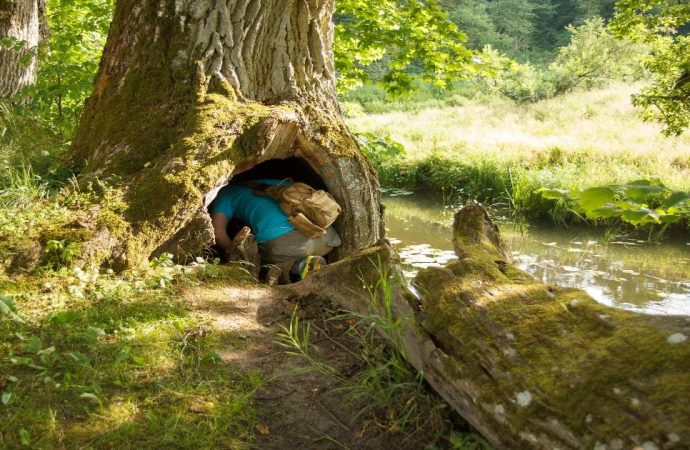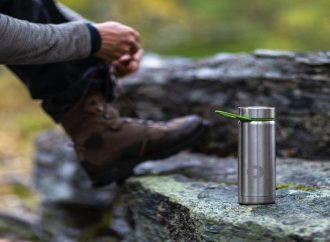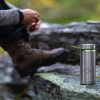Over the past few years, we’ve seen how poorly the general public reacts when they think the end of the world is near – remember those people hoarding toilet paper by the truckload in the first few weeks of the pandemic? However, when it really is a SHTF scenario instead of just a mild virus
Over the past few years, we’ve seen how poorly the general public reacts when they think the end of the world is near – remember those people hoarding toilet paper by the truckload in the first few weeks of the pandemic?
However, when it really is a SHTF scenario instead of just a mild virus with a very high survival rate for regular people, there’s a number of essentials you’ll need to get through the dark days.
A survival cache is an essential aspect of every prepper’s campaign to make it to tomorrow, and knowing the best places to hide caches is as important as knowing what to put in it, and what kind of survival cache box you need to buy.
We’ve put together a guide of where and where not to hide yours.
The Best Places To Hide Caches
Your cache should be in a sweet spot that’s close enough to your residence for convenience, but far enough that it won’t be found at the same time as you. If you come face-to-face with a foe, they could hurt you, meaning your medical supplies are more important than ever.
You also want to be able to check your possessions frequently without moving too far from base camp. We recommend a short, five-minute walk – it’s handy, but not obvious, and any raiders will likely give up before looking that far afield.
Don’t forget, if your bug out plan involves walking many miles then you might want to leave smaller survival caches along the route well in advance to sustain you, so you don’t have to carry litres of water.
Or even if you are staying put, you can have multiple caches for enhanced security.
Abandoned Industrial Buildings
In a SHTF scenario, you should view other survivors as your enemies – even if they’re not out to kill you, always remember it’s an every-man-for-himself scenario. That means they’ll be looking to one-up you with better supplies, even if that means stealing yours.
Don’t place your essentials in an abandoned building where they are obvious, as they’re a hotbed for supplies, and therefore a target.
Whether searching for cabling, shelter materials or something completely different, these will be the go-to for many, and it’s not worth risking your essentials for a small layer of convenience.
Avoid industrial parks, schools and residential areas in the cities unless you have somewhere decent within those places to hide them.
For example, some buildings have ceiling tiles which can be popped up and things hidden above them, but don’t put your gear in a cupboard or somewhere obvious that other people will be searching during a ransack for supplies.
Storage Facility
Programs like Storage Hunters are great for some easy viewing, but these containers and other similar units should be avoided like the plague as the security they normally have will be gone quickly in a SHTF situation.
Guaranteed to be some of the first places to be raided, their contents are unknown, creating the opportunity for survival preppers to strike gold with weapons, clothing and bedding.
As they’ll be a main target, you don’t want to create the perfect opportunity for your essentials to be taken and keep everything in one place.
The exception is unless you are planning hold it there only for safekeeping to save space at home, and then extract all of your belongings from it within hours or days of disaster striking. Some containers will even hold a large car ready-packed with all of your bug out gear.
Underground

This is one of the best places to hide caches as there’s no clear markers to the outside world, and you can constantly change the location, rather than committing to a man-made structure for security.
There are a few obstacles that could stand in your way, such as wintertime causing the ground to harden and be impenetrable, even with a survival spade (which you should also consider as one of your essentials).
If you dig down deep too you’ll likely hit the water table and end up with a soggy, dirty cache if it’s not insulated properly.
However, you don’t necessarily need to hide your cache in the soil. You can simply dig a hole and cover it with twigs and leaves, using the natural environment as the perfect camouflage.
Just make sure that it’s sturdy when walked on in case anybody discovers it. Also make sure that animals are not going to dig up the stash by smelling the food inside.
Make sure to leave a marker so you can remember where it is, as losing your essentials is one of the worst things that can happen to a prepper surviving a disaster.
Scratches in a nearby tree, a ribbon tied on a branch or a pile of rocks should suffice as a way to remember. Like a squirrel, create a mental map of where you’ve buried everything for those hard times.
Remember that some places such as near a river or lake will likely be wet as the water table will stretch out horizontally from the body of water, soaking your gear.
Burying items right under a tree too is not a good idea, unless you want to hack through an entire root system to make the hole. Hiding items in the middle of a field is not recommended either, as it’s likely just laying fallow and will be ploughed by a farmer at some point in time, and there’s no easy way to mark it.
Residential Properties
There really is no place like home. Those who are bugging in will set up traps and other devices, like fences, to ensure no-one can approach them, or their loved ones, and even going near the property will have you immediately viewed as a threat.
It’s one of the highest risks on this list, as when SHTF, many will do their best to stay in their homes to minimise disruption, not making it one of the best places to hide caches you can choose from.
Tower blocks and multi-family residences provide more threats, but detached homes will have stricter security as there’s more to lose for the residents, and fewer targets.
Avoid hiding your possessions here, as they’re likely to get taken if needed, or destroyed to prevent you from returning to the scene.
You may think an abandoned or boarded up house is a good place to stash things, but even in good times these places get raided by teenagers, junkies and the homeless who will decimate your preps.
What’s more, the house could be sold, and a new owner discovers it, or it could be demolished without your knowledge.
If it’s your own home, that’s a different story, and make use of all available space to store your caches – in outbuildings, in animal shelters, in sheds, in the loft, in a basement, under beds or in cupboards. Check here for a list of the best places to hide gear in your home.
One key tip is not to store the same type of prep in the same place, if you have weapons then hide them in different locations as even if one gets taken during a raid from locals or the army, then you still have backups hidden.
Burying items in your garden is a great idea if you’re planning on bugging in, and you can even create a special underground shelter for lots of storage. Just dig the hole, cover it with a board, and then cover with substrate like stones.
Find a good container that can endure the elements for your goods, like a large food grade barrel or waterproof chest.
High Up
‘Out of sight, out of mind’ applies in a disaster situation, too. Like burying them, if your goods are high up, they can’t be seen, meaning there’s little chance of people stumbling across them, even if they’re specifically looking which is also very unlikely, unless they’ve seen signs of life nearby.
You’ll need somewhere that’s difficult, but not impossible, to access. It’s unlikely that those searching will have a ladder or climbing apparatus with them, but if you have something like a box to stand on, you’ll be fine.
Once again, requiring equipment to reach it leads to added effort, so ensure it’s near your main location – but not too close to provide immediate signs of life.
In Plain Sight
In survival situations, people tend to worry and overthink. You can take advantage of this by keeping your goods somewhere too obvious to be considered worth searching, like the bottom of a bin full of general rubbish or a compost heap covered in leaves.
You can also disguise your cache as something no-one will bother to check, like an old shoebox or burned-out car. This does run a higher risk of it being found, but it’s perfect for a quick fix solution.
Summary
There’s a huge number of places you can hide your cache box, but one common thread runs throughout your options – away from others. These are your essentials and deserve to be treated accordingly.
We also recommend dividing your possessions into categories, not placing all of your eggs in one basket, and spreading them across various caches to prevent losing all of your goods in one go.
The best places to hide caches are usually close to home, but in an area that is not conspicuous, and whatever you do don’t let anyone catch you hiding your survival cache!





















